Human bones covered in bite marks are discovered in a cave in Cheddar Gorge – suggesting Stone Age people practiced CANNIBALISM as part of their funeral rituals
>
Although people today tend to bury or cremate their dead, it seems that our ancient ancestors did things a little differently.
Researchers say the Magdalens – an early hunter-gatherer culture widespread in Europe – ate their loved ones simply to dispose of their bodies.
The experts analyzed bones uncovered at almost 60 sites across Europe, including Gough’s Cave in Cheddar Gorge, Somerset.
The presence of human bite marks reveals that cannibalism was ‘a common burial practice’ – and not because they needed the meat to survive.
Gough’s Cave is reputed to be the site of Britain’s oldest complete skeleton, dating from around 10,000 years ago, called the ‘Cheddar Man’.
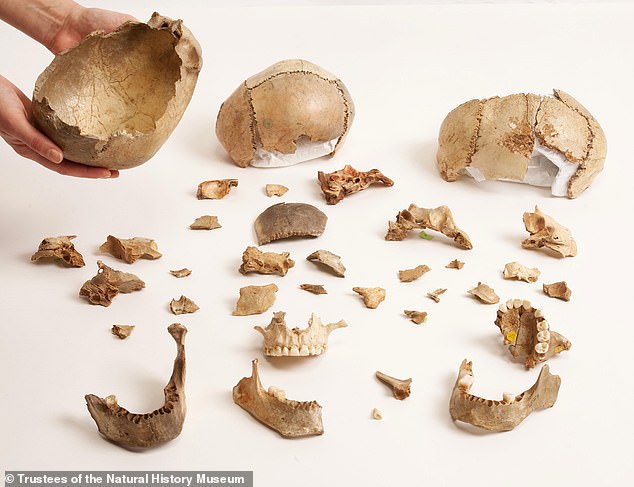
Skull caps from Gough’s Cave in Somerset, England and Courbett Cave in the south of France
The research was led by experts from the Natural History Museum in London, who believe that the Magdalenes did not eat human flesh to survive, but for ritual reasons, as it was only part of their culture.
The Magdalen era saw a flourishing of early art, from cave drawing and tool decoration to stone engraving.
“We interpret the archaeological evidence that cannibalism was practiced several times in northwestern Europe over a short period of time,” said Dr. Silvia Bello, paleoanthropologist at the Natural History Museum.
‘(It is) an indication that such behavior was part of funerary behavior among Magdalen groups, and not simply practiced out of necessity.
“That in itself is interesting because it is the oldest evidence of cannibalism as a funerary practice to date.”
Magdalens were an early hunter-gatherer culture in Western Europe, dating from about 17,000 to 12,000 years ago.
They are believed to have entered Britain from Belgium and the Netherlands about 15,000 years ago, when the British Isles were still connected to mainland Europe (before the catastrophic mega-flood that separated them).
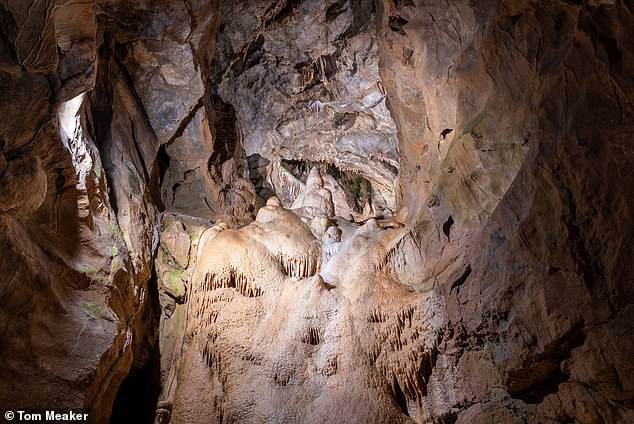

Experts analyzed bones uncovered at almost 60 sites across Europe, including Gough’s Cave in Cheddar Gorge, Somerset (pictured shows rock formations at Gough’s Cave)
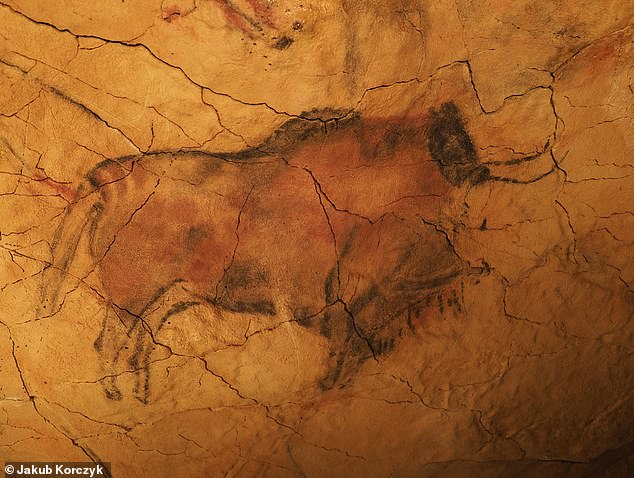

The Magdalen era saw a flourishing of early art – from cave drawing and tool decoration to stone engraving. In the photo a bison drawing at the Cave of Altamira in Spain, probably made by the Magdalenas
At the time, Earth’s climate was beginning to warm after the most recent ice age, when ice caps and glaciers covered about half of Europe, North America, South America and much of Asia.
According to the Natural History Museum, a group of Magdalen people made their way to Gough’s Cave and settled there.
Gough’s Cave, a famous Palaeolithic site in Cheddar Gorge, is known for the discovery of three manipulated human skulls shaped like cups.
It has also yielded more than 100 human bone fragments modified by cut marks, fractures and human chew marks, some specimens of which are currently housed in the Natural History Museum.
For the study, the researchers looked at human remains from 59 known Magdalene sites across Europe, including England, Spain, France, Belgium, Germany, Poland and Russia.
In total, the sites of ritual cannibalism included Courbett Cave in France and Maszycka Cave in Poland, El Castillo in Spain and Peterfels in Germany, as well as Gough’s Cave.
However, not all Magdalene sites revealed evidence of the grim practice; in some cases the bodies were deliberately buried, sometimes alongside grave offerings and cave art.
Of the 59 sites of Magdalene human remains identified across Europe, 13 showed evidence of ritual cannibalism, 10 of burials and two of both behaviors.
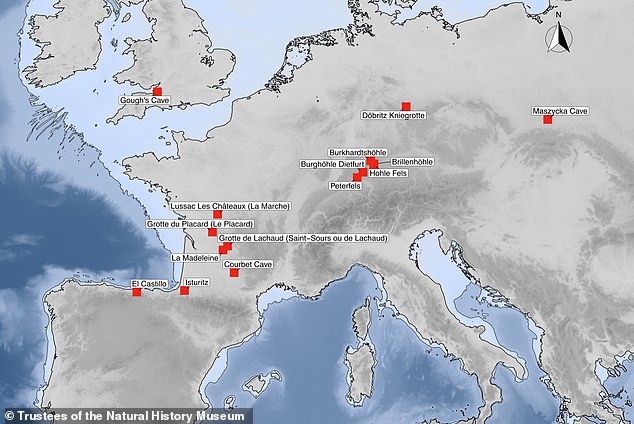

Map of Magdalene sites in Europe where cannibalism has been identified as a funerary behavior
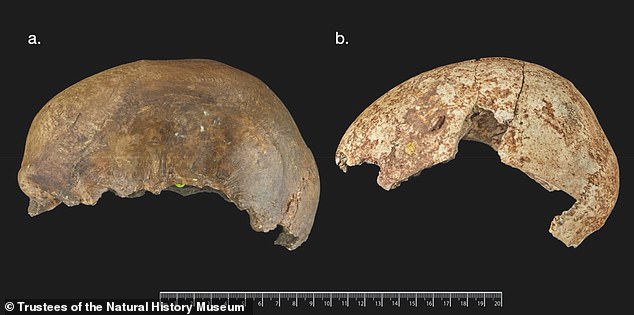

According to the new study, the people who lived in Gough’s Cave were part of a wider cannibalistic culture in Northern Europe. Pictured: Magdalena skull caps
Overall, the findings suggest that eating the dead was a “shared behavior” at the time.
In other words, it was not widespread and not limited to one “heinous outlier” group who had made the decision to eat the corpses of their loved ones.
Further genetic evidence seemed to suggest that the two burial behaviors could be separated in genetically distinct populations.
All of the sites where evidence of cannibalism has been found show that the people were part of a genetic group known as ‘GoyetQ2’, while all of the more common burials were of people belonging to the ‘Villabruna’ genetic group.
Although both groups lived in Europe at the same time, individuals with GoyetQ2 ancestry were more common in the region along the French-Spanish border.
Meanwhile, Villabruna’s lineage was carried by individuals who inhabited the Italo-Balkan region, further east.
This suggests that the more conventional burial practice spread from east to west, gradually abolishing the stranger practice of eating the dead.
The research was published in Quaternary Science Reviews.
